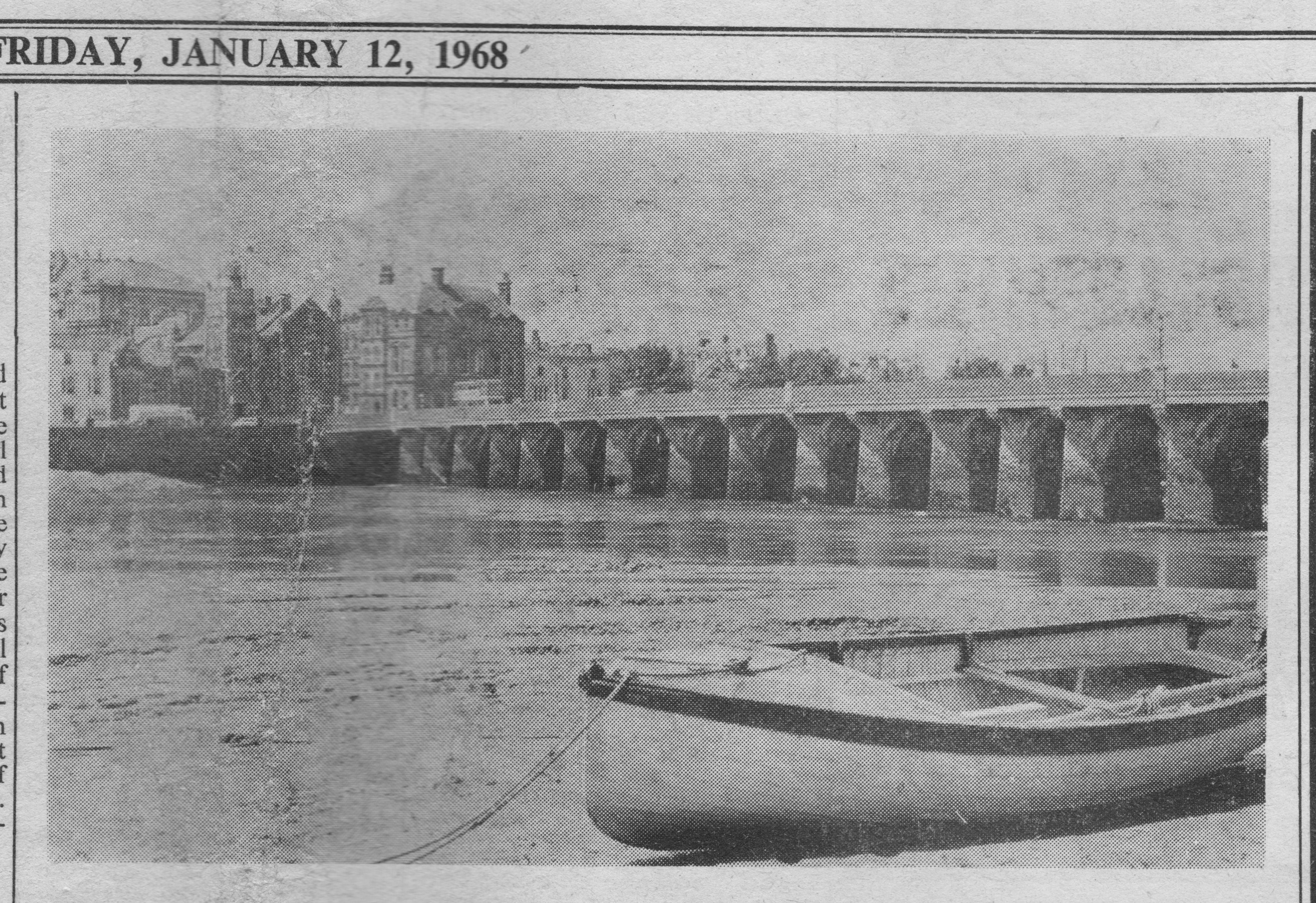Bideford Bridge Collapse - 12th January 1968
Bideford's lifeline, the famous 700-year-old Long Bridge, was cut with dramatic suddenness on Tuesday night, masonry falling into the river from two arches adjoining the western end. No one was injured but the effect on the lives of the many thousands who use the bridge daily was paralysing. Immediately after the alarm was given police closed the bridge to all traffic, and it was later closed to pedestrians.
Army Dukws were brought in to help ferry people across, road traffic faced a long detour (usually a 14-mile trip via Torrington) and the railway line was re-opened for a special passenger service to and from Barnstaple from Torrington. When they carried out £25,000 repairs to the bridge last year the Bridge Trustees warned that something of this nature could happen and that it was absolutely vital that a new bridge should be built.
Attempts by them and by the Town and County Councils to bring this home to the Ministry of Transport failed.
The Bridge Trustees held an emergency meeting on Wednesday morning following inspection of the damage by Bridge Warden (Mr Jim Wickham).
The Mayor (Mr Harold Blackmore) told the Gazette on Wednesday morning: 'We have been pressing for a new bridge for some years and have continually drawn the attention of the authorities to the dangerous condition of the existing bridge. In fact the Town Council recently passed a resolution absolving themselves of any responsibility for any accident from the failure of the bridge. Now perhaps the Minister of Transport (Mrs Barbara Castle) will realistically view the position and something will be done.'
Mr Peter Mills, MP, who was among those on the scene early on Wednesday, said he was ringing Mr Stephen Swingler, Minister of State, to ensure that he knew of the seriousness of the problem and how it would affect the area. 'I shall seek from him an assurance that the Ministry will support 100 per cent, anything we want to do to restore the situation - I am asking that one of his senior officials shall come down to look into the whole problem.' Mr Mills added that in view of the type of material of which the bridge is built, which could now be seen to be
pretty poor, he would urge Mr Swingler to authorise the Army to provide a Bailey bridge - if practicable for the full width of the river. 'I want a thorough enquiry into the situation and I want it done quickly because of holiday traffic and the effect delay would have on the economy of the area. This must emphasise the importance of getting on with the task of building a modern bridge to meet the needs of the area.'
After making his inspection the Bridge Warden said the first and second piers of the west end of the bridge had sustained damage, probably by the movement of the river bed under the piers.
There were no proper foundations to the ancient bridge, he pointed out, and it was not known what was underneath. Sand and mud appeared to have shifted. The second pier out had sunk, throwing it out of plumb, which resulted in the partial collapse of the piers and arches.
The £25,000 scheme last year did not cover work below the waterline. 'This is something which cannot be foreseen; it is an inherent defect,' he said. The old bridge had been given an unfair task in coping with ever increasing modern traffic, to the effect of which attention had been many times drawn.
In his view the bridge might have to be closed to vehicular traffic for many months and the cost of repair was likely to be very many thousands of pounds.
